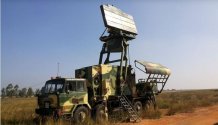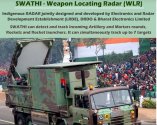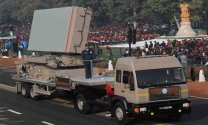K Missile Series
The K family of missile is a submarine-launched ballistic missile(SLBM)
They are being developed to provide second-strike capabilities and they are nuclear deterrence
There are three variants: K-15(Sagarika), K-4 and K-5.
K-15 has 750 km range.
K-4 missile has two sub-variants, one with 3500 km range and other with 5000 km range.
K-5 is under development with a range >5000 km.
The K family of missile are used with nuclear powered Arihant class submarines.
Anti-satellite missile
DRDO developed anti-satellite system called A-SAT.
It sucessfully destroyed a live satellite in the LEO on March, 2019.
With this, India is only the fourth coutrny after the US, Russia and China to have the technology.
It struck a predetermined target: a redundant Indian satellite(Microsat R) that war orbiting at a distance of 300 km from the Earth's surface.
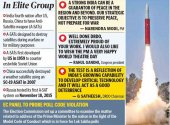
.
India's Ballistic Missile Defense System(BMD)
India's BMD development began in 1999, after the Kargil war.
The primary aim is to bolster India's defence against possible nuclear attack from Pakistan.
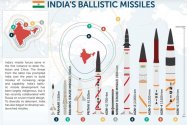
It holds a place of prime importance especially when India follows "No first use policy".
India seeks to deploy a functional "iron dome" ballistic missile defence(BMD), incorporating both low-altitude and high-altitude interceptor missile.
India'a BMD is a primarily developed by DRDO with help of many public and private firms like BEL, Astra, Microwave, L&T, etc.
India's BMD is being developed in 2 phases:
The first phase aims to develop a shield to intercept missile with a range up to 2000 km.
First phase radar range is up to 600 km.
The second phase will have intercept missile with 5000 km range.
Radar range of this a phase would be 1500 km.
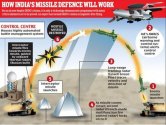
.
Two tiers of India's BMD
They are Prithvi Air Defense(PAD) and Advanced Air Defence(AAD) respectively.
PAD:
India's ballistic missile defence got a bosst with the development of PAD.
It is also referred as Pradyumna Ballistic Missile Interceptor.
It is designed of high altitude interception(exo-atmospheric interception)
The system was tested with a maximum interception altitude of 80 km.
It has been designed to neutralise missiles within a range of 300-2000 km up to a speed of mach 5.
The interceptor is Prithvi Defense Vehicle(PDV) wich has two-stage, both with solid propellants.
The technology employed in the PAD was the forerunner to the indigenously developed Advanced Air Defense(AAD) interceptor missile wich was tested in 2007.
The Barak-2 was developed in collaboration with Israel.
Advanced Air Defense(AAD)
Is is also called Ashwin Ballistic Missile Interceptor.
It is endo-atmospheric interception system(for low altitude interception)
Altitude of interception is range up to 30 km.
It has single-stage solid fuelled missile.
On December 2007, AAD successfully intercepted a modified Prithvi-II missile acting as an incoming ballistic missile enemy target.
On March 2011, India launched its indigenously developed interceptor missile from the Odisha coast.
On April 2015, an improved AAD was tested.
The missile was launched from a canister for the first time and the composite rocket motor fired sucessfully.
On August 2018, a sucessful test was carried out by one of multiple incoming targets simulating 1500 km class ballistic missiles was destroyed.
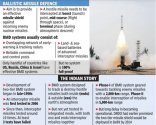
.
Radar Systems
Swordfish Radar
Swordfish is a long-range tracking radar developed for the BMD system.
It was derived from the Israeli Green Pine long rang radar.
It is capable of sucessfully detect, track and stop inbound ballistic missile threats.
The radar can detect very small targets as small as a cricket ball within the range of 600-800 km.
Swordfish guides the exo-atmospheric interceptor missile PAD to engage aerial targets at altitudes over 80 km.
Indian Doppler Radar(INDRA)
The Indian Doppler Radar(INDRA) series of 2D radars were developed by India's DRDO for the Army and the Air Force.
The INDRA-I is a mobile surveillance radar for the low level target detection while the INDRA-II is for ground-controlled interception of targets.
INDRA-I was the first large radar system designed by the organization and produced in number for the defence forces.
It was also exported to Sri Lanka.
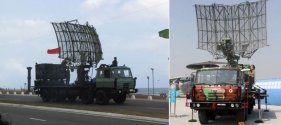
Battle Field Surveillance Radar
It is a man portable 2D short-range battlefield and perimeter surveillance radar.
This radar has been a boon to Indian forces at LOC.
It is used by Indian Army and BSF(Border Security Force) along with foreign customers like Indonesia and Sudan.
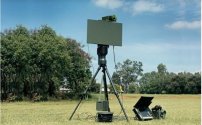
The K family of missile is a submarine-launched ballistic missile(SLBM)
They are being developed to provide second-strike capabilities and they are nuclear deterrence
There are three variants: K-15(Sagarika), K-4 and K-5.
K-15 has 750 km range.
K-4 missile has two sub-variants, one with 3500 km range and other with 5000 km range.
K-5 is under development with a range >5000 km.
The K family of missile are used with nuclear powered Arihant class submarines.
Anti-satellite missile
DRDO developed anti-satellite system called A-SAT.
It sucessfully destroyed a live satellite in the LEO on March, 2019.
With this, India is only the fourth coutrny after the US, Russia and China to have the technology.
It struck a predetermined target: a redundant Indian satellite(Microsat R) that war orbiting at a distance of 300 km from the Earth's surface.

.
India's Ballistic Missile Defense System(BMD)
India's BMD development began in 1999, after the Kargil war.
The primary aim is to bolster India's defence against possible nuclear attack from Pakistan.

It holds a place of prime importance especially when India follows "No first use policy".
India seeks to deploy a functional "iron dome" ballistic missile defence(BMD), incorporating both low-altitude and high-altitude interceptor missile.
India'a BMD is a primarily developed by DRDO with help of many public and private firms like BEL, Astra, Microwave, L&T, etc.
India's BMD is being developed in 2 phases:
The first phase aims to develop a shield to intercept missile with a range up to 2000 km.
First phase radar range is up to 600 km.
The second phase will have intercept missile with 5000 km range.
Radar range of this a phase would be 1500 km.

.
Two tiers of India's BMD
They are Prithvi Air Defense(PAD) and Advanced Air Defence(AAD) respectively.
PAD:
India's ballistic missile defence got a bosst with the development of PAD.
It is also referred as Pradyumna Ballistic Missile Interceptor.
It is designed of high altitude interception(exo-atmospheric interception)
The system was tested with a maximum interception altitude of 80 km.
It has been designed to neutralise missiles within a range of 300-2000 km up to a speed of mach 5.
The interceptor is Prithvi Defense Vehicle(PDV) wich has two-stage, both with solid propellants.
The technology employed in the PAD was the forerunner to the indigenously developed Advanced Air Defense(AAD) interceptor missile wich was tested in 2007.
The Barak-2 was developed in collaboration with Israel.
Advanced Air Defense(AAD)
Is is also called Ashwin Ballistic Missile Interceptor.
It is endo-atmospheric interception system(for low altitude interception)
Altitude of interception is range up to 30 km.
It has single-stage solid fuelled missile.
On December 2007, AAD successfully intercepted a modified Prithvi-II missile acting as an incoming ballistic missile enemy target.
On March 2011, India launched its indigenously developed interceptor missile from the Odisha coast.
On April 2015, an improved AAD was tested.
The missile was launched from a canister for the first time and the composite rocket motor fired sucessfully.
On August 2018, a sucessful test was carried out by one of multiple incoming targets simulating 1500 km class ballistic missiles was destroyed.

.
Radar Systems
Swordfish Radar
Swordfish is a long-range tracking radar developed for the BMD system.
It was derived from the Israeli Green Pine long rang radar.
It is capable of sucessfully detect, track and stop inbound ballistic missile threats.
The radar can detect very small targets as small as a cricket ball within the range of 600-800 km.
Swordfish guides the exo-atmospheric interceptor missile PAD to engage aerial targets at altitudes over 80 km.
Indian Doppler Radar(INDRA)
The Indian Doppler Radar(INDRA) series of 2D radars were developed by India's DRDO for the Army and the Air Force.
The INDRA-I is a mobile surveillance radar for the low level target detection while the INDRA-II is for ground-controlled interception of targets.
INDRA-I was the first large radar system designed by the organization and produced in number for the defence forces.
It was also exported to Sri Lanka.

Battle Field Surveillance Radar
It is a man portable 2D short-range battlefield and perimeter surveillance radar.
This radar has been a boon to Indian forces at LOC.
It is used by Indian Army and BSF(Border Security Force) along with foreign customers like Indonesia and Sudan.


